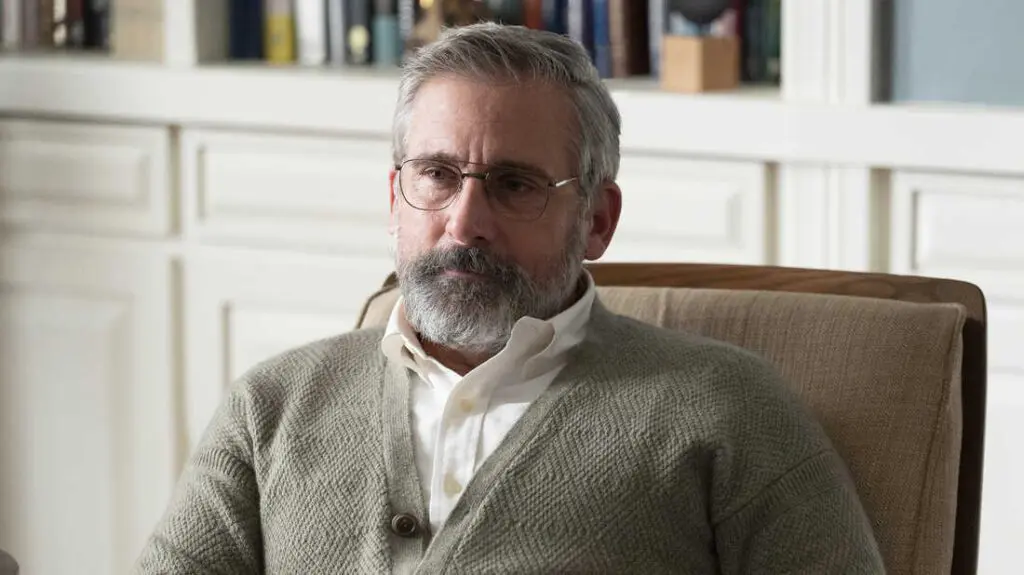Summary
A touching and surprising finale rounds out the year’s most underrated show.
“I usually have a beer, and try to relax.”
There’s nothing unusual about that sentence. It’s something most people have probably said at some point — perhaps even most evenings. It’s fine. It’s not worrying, not at all. But as soon as you adjust the context, it becomes horrifying. That line is what Candace says to Alan (an extraordinary Steve Carell) when he explains that Sam intends to murder his father. That is what Candace does whenever her son is out murdering people. She has a beer, and she tries to relax.
At what point does denial become complicity? At what point does the mother become the monster?
It’s the finale. But Episode 10 really feels like an extension of Episode 9, in which Alan accidentally convinced Sam that murdering his abusive father would bring an end to all his problems. So, that’s what he goes to do. For the first time, we get to see the man who has been talked about so much, in such evil terms. And… he’s unremarkable. Scruffy-looking. He seems to live alone, and when Sam arrives, he offers to make him a sandwich.
But there’s something off about Sam’s father. “The Cantor’s Husband” doesn’t depict him as some kind of rampaging tyrant, but it lets a glimmer of nastiness show through. Sam asks him why he hit him so much as a kid, and he shrugs it off, blaming it on Sam being weird, on Candace blaming him for that. “Sorry, anyway,” he says, as if he’s apologizing for missing dinner. There’s no wonder Sam wants to strangle him. There’s no wonder he starts to. But, oddly, he stops.
When Sam reports this to Alan, the latter tells him this is the major breakthrough they’ve been waiting for. It’s proof he has changed. He realized at that moment that he didn’t want to be his father, and he prevented himself from becoming him. The childlike smile that creeps across Sam’s face when Alan tells him he’s proud is pathetic, terrifying, and confusing since it made me root for him a little bit, to hope for a brief moment that he might change, even though I’ve seen him kill two people first-hand, neither for any reason.
Alan’s smile, though, doesn’t seem genuine. It seems performative, and his words ring hollow. Alan takes the opportunity to suggest that it’s time for him to go home, to be able to achieve the breakthrough with Ezra that Sam has achieved with his own father. He’s willing to continue to see Sam in his practice, and he’s legally and ethically bound not to turn him in. Everyone’s a winner.
True to form, Sam misinterprets this conversation, buys a couch and a mini-fridge, and offers to stock it with whatever Alan wants. He also turns Alan’s own words against him, explaining that sometimes therapy can take years. In a brief conversation with Charlie, Alan recognizes what’s happening — Sam wants a replacement father figure. He wants to redo his life again, but without the abuse he suffered the first time. And Alan, understandably, isn’t down for that.
So he changes approach — again. He wakes Sam up in the middle of the night and tells him the therapy is over. Either Sam turns himself in, so he can be institutionalized and physically prevented from acting on his impulses, allowing him to heal, or he just kills Alan and gets it over with. Either way, this is the end. Sam wordlessly shrugs a jacket on and leaves. We see him sitting outside the police station contemplatively. We see him turn to his mother, like a child.
Remember the question we posed at the top? When Candace heads downstairs to give Alan his scrambled eggs, she asks him to stay, claiming Sam isn’t ready for him to leave. Alan reiterates that this is over. He even gives Candace the hard truth — while the abuse Sam suffered wasn’t her fault, she took no steps to protect him from it. As with now, her inaction is integral to everything. She cries. When Alan goes to give her a tissue, he grabs her and holds Chekhov’s foot cream tube to her throat. He might not be able to overpower a strong, young-ish man, but he can overpower a middle-aged woman.
This is it. This is the stand-off. Either Sam turns himself in or Alan cuts his mother’s throat. Sam doesn’t believe he’s the type of man who could do that. As we see the sharpened edge of the tube dig into Candace’s neck, drawing blood, we cut away.
Alan imagines being gassed at Auschwitz. He imagines sitting with Ezra and enjoying dinner with his family, happily singing Hebrew songs. When we cut back to the basement, we see why — he’s dead. Sam has strangled him. He drags his open-eyed corpse into the makeshift grave in the other room and finds the note Alan wrote on the yellow legal pad by his bed. It’s a letter to his children; an apology, a goodbye, an urging for them not to let his death define the rest of their lives. We see them read it. Sam sends it along with a letter from himself, explaining that Alan is dead, but that he helped him a lot, and that he has left his body where it’ll be found so the proper Jewish mourning practices can take place.
When Sam returns to the basement and stares at its emptiness, he imagines Alan telling him that he’ll kill again. He chains himself to the bed, where Alan has been all this time, and gives Candace the key.
In the final scene of The Patient, Ezra begins therapy.




